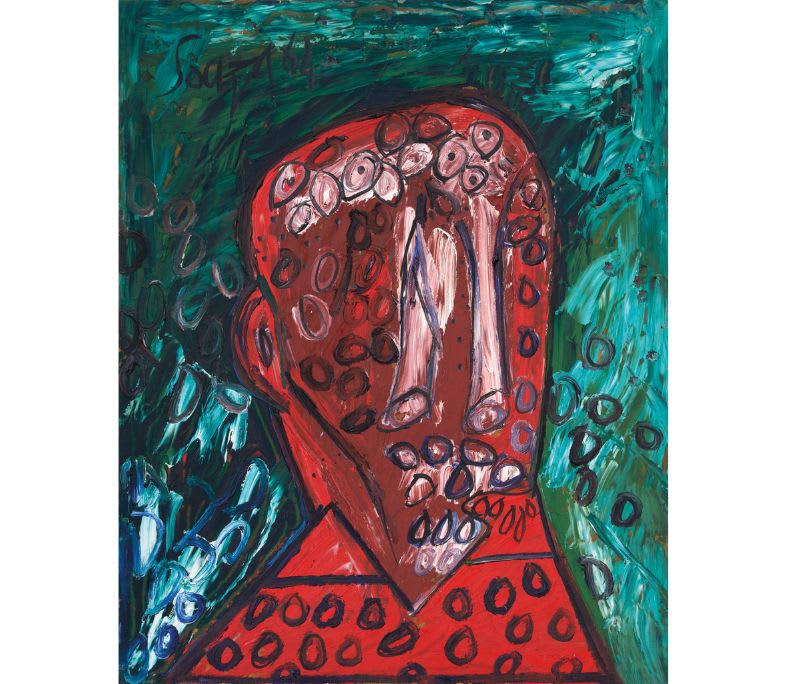Dhoomimal Gallery at MASH Ball
Francis Newton Souza
1924 – 2002
Francis Newton Souza, the enfant terrible of modern Indian art, remains one of its most iconic masters. A founder of the highly influential Progressive Artists’ Group, Souza was one of the early artists to be associated with Dhoomimal Gallery.
Born on April 12, 1924, in Saligao, Goa, Souza lost his father at a very young age and was seriously afflicted by small pox in his childhood. He grew up in Bombay as his mother shifted to the city after his father’s death.
Souza showed signs of rebellion early on; he was expelled from Sir J. J. School of Art, Bombay, for participating in the Quit India movement and briefly joined the Communist Party. He also faced charges of obscenity on one of his earliest exhibitions; this would also become the reason for his emigration to London in 1949.
Though his early years as an artist in the UK were difficult, he attained success after the publication of his autobiographical essay, Nirvana of a Maggot, in the Encounter magazine in 1955. This was also the year when Souza made one of his most famous paintings, Birth.
In 1967, Souza shifted to New York, where he settled but continued to divide time between the US and India till his death due to a heart attack in Mumbai on March 28, 2002.
A Catholic by birth, Souza remained unrelenting in his critique of the clergy as he also laid bare the grotesque in everyday life. His work is not pleasing but repels, in which lies his genius of creating cruel humour through fierce lines. Closest to European modernism, Souza created inventive human forms, particularly the heads—with exaggerated features, they exude vulnerability, yet remain macabre. Another distinctive leitmotif of his art are the nudes, not the voluptuous beauty but coarse and closer to life.
He painted in every style and medium, even inventing ‘chemical alterations’—a method of drawing with the use of chemical solvent on a printed page without destroying the glossy surface.
Artwork Description:
Part of a series of many important works that Souza created throughout his lifetime was the ‘Head’, the work transforms the human face into a mask-like symbol of frailty and survival. Influenced by icons, Cubism, and Expressionism, Souza distorts features with bold outlines, raw brushwork, and a striking palette of reds, greens, and blacks. The result is both sacred and grotesque — a powerful image that critiques society while exposing the intensity of the human condition.

